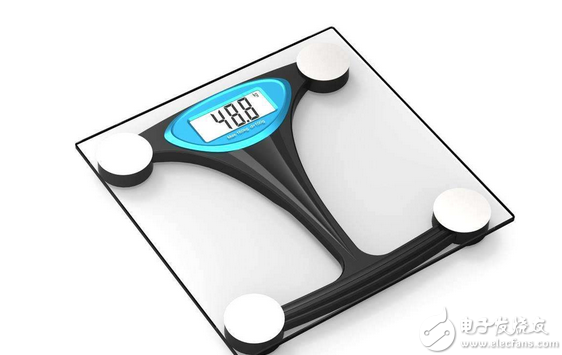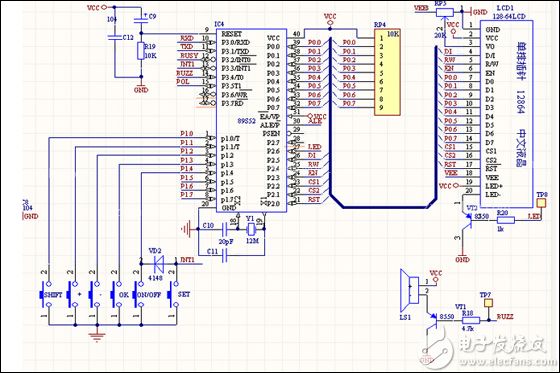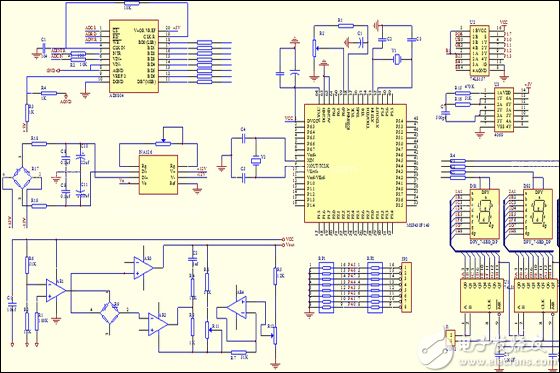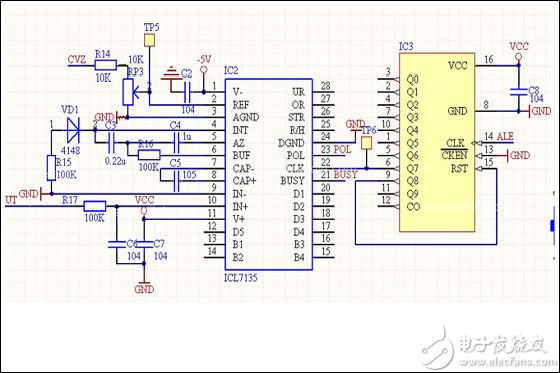What is the principle of electronic scales that are common in life? Attached to the schematic, take it away
Electronic scales are widely used in our lives. Whether we weigh them or when we buy goods, there are many types of electronic scales, such as desktop scales, portable scales, etc. Have their own characteristics. In the past, the old-fashioned portable scales have been gradually eliminated. The electronic scales have an important position in our daily life. The weighing problems in people's lives must be solved by them. Do you understand the principle of electronic scales?

In our daily life, we are inseparable from buying and selling, and almost all scales are inseparable from all scales. With the development of the times, the continuous research and development of technology, the continuous upgrading of products, the electronic products industry is more rapid, the old-fashioned portable scales It is gradually replaced by electronic scales. The production of electronic scales undoubtedly solves the weighing problems encountered by people in the process of buying and selling. Moreover, the design of electronic scales is very precise, and the transactions between people and people have also been fair. . Next, let's take a look at the principle of electronic scales with Xiaobian!
The electronic scale schematic constitutes the first part
Workflow of the electronic scale: When the object is placed on the weighing pan, the pressure is applied to the sensor, the sensor is deformed, so that the impedance changes, and the excitation voltage is changed to output a varying analog signal. The signal is amplified by an amplifying circuit and output to an analog to digital converter. The digital signal converted into a convenient processing is output to the CPU arithmetic control. The CPU outputs this result to the display according to keyboard commands and programs. Until this result is shown.
The electronic scale schematic constitutes the second part
Classification of scales: According to the principle: electronic scales, mechanical scales, electromechanical combined scales; according to function points: counting scales, pricing scales, weight scales; by purpose: industrial scales commercial scales, special scales.
The electronic scale schematic constitutes the third part
The scale of the scale: desktop scale refers to the electronic scale with the full weighing below 30Kg; the scale refers to the electronic scale with the full weighing within 30-300Kg; the weighbridge refers to the electronic scale with the full weighing of more than 300Kg; precision balance.

The electronic scale schematic constitutes the fourth part
Classified by accuracy: Class I: special balance, precision ≥ 1 / 100,000; Class II: high-precision balance, 1 / 1 million ≤ precision <1 / 100,000; Class III: medium precision balance, 1 / 1000 ≤ Fineness <1/1 million; Grade IV: general scale, 1/100 ≤ precision <1/1000.
The schematic diagram of the electronic scale constitutes the fifth part
Terminology: Maximum weighing: The maximum load that an electronic scale can weigh without weighing the tare. Minimum weighing: An absolute error that an electronic scale will exhibit below this value. Insurance load: 120% normal weighing range. Rated load: deformed weighing range. Allowable error: The maximum deviation allowed by the level check. Sensing: The smallest scale that can be displayed by an electronic scale, usually expressed as “dâ€.
Analytical volume: The smallest scale that can be resolved by an electronic scale with counting function. Resolution: An electronic scale with counting function, there is a parameter inside the resolution. Warm-up time: The time used by a scale to reach each indicator. Accuracy: The ratio of the sensed quantity to the full scale. The ambient temperature of the electronic scale is: minus 10 ° C - 40 ° C. Table size of the platform scale: 25cm X 30cm 30cm X 40cm 40cm X 50cm 42cm X 52cm 45cm X 60cm.

The schematic diagram of the electronic scale constitutes the sixth part
The characteristics of the electronic scale: realize the remote interval operation, realize the automatic control, the digital display is intuitive, and the gentleman is the error; the correctness is high, the debate rate is strong; the weighing scale is wide. Unique features: deduction, pre-deduction, zero, accumulation, warning, etc.; simple protection, small size; special industry, can be connected to printer or computer drive; intelligent electronic scale, fast response, high efficiency.
Electronic scale schematic diagram constitutes the seventh part
The process of electronic scale review: first check whether there is wear and damage; whether it can be turned on: whether it is displayed from 0 to 9 after the power on, whether the number is ambiguous, whether it can be zero or not; whether there is backlight; whether the weight can be weighed with the weight test Whether the charger is in good condition, whether it is used or not;
The electronic scale schematic constitutes the eighth part
Sensor type: Resistive type: moderate price, high precision, universal use; Capacitive type: small size, low precision; magnetic floating type: high precision, high cost; hydraulic type: now eliminated in the market. Display type LCD, plug-in free, power saving, with backlight.

Electronic scale schematic diagram constitutes the ninth part
After the sensor is damaged, the weighing is not accurate, and the display does not return to zero; the displayed number jumps, and the resistance value of the four lines is measured by the resistance file first, and there are 6 groups. If it is 400-450 ohms, it is +E, -E; if it is 350 ohms, it is +S, -S; for 290 ohms, it is R bridge arm; 2. At +E, -E, it is +_5V Voltage, the sensor accurately applies a pressure, such as the output +_S increases, the red test pen is +S, and vice versa -S.
The electronic scale schematic constitutes the tenth part
High-precision counting scale features: Kg/Ib unit conversion function; zero display range, adjustment function; sampling speed adjustment function; 10 sets of single-weight memory function; simultaneous weight, quantity, and accumulation functions; Warning function; active zero tracking, temperature linear calibration.
Conclusion: Electronic scales use modern sensor technology, electronic technology and computer technology integrated electronic weighing device to meet and solve the "fast, accurate, continuous, automatic" weighing requirements in real life, while effectively eliminating human error. To make it more in line with the application requirements of legal metrology management and industrial production process control. The various characteristics of the electronic scale make it widely used in various industries. The above is the related knowledge of the electronic scale schematic introduced by Xiaobian, and I hope to help everyone.
Amd Gaming Pc,Gaming Computer,Gaming Pc I7,Pc Gamer
Shenzhen Wanheyun Computer Co.,Ltd. , https://www.xcypc.com